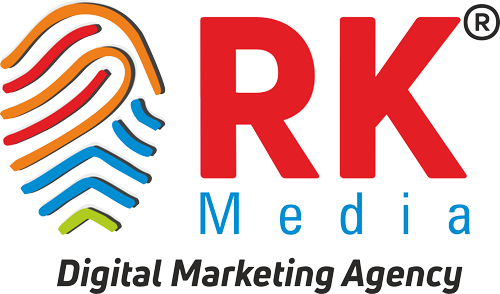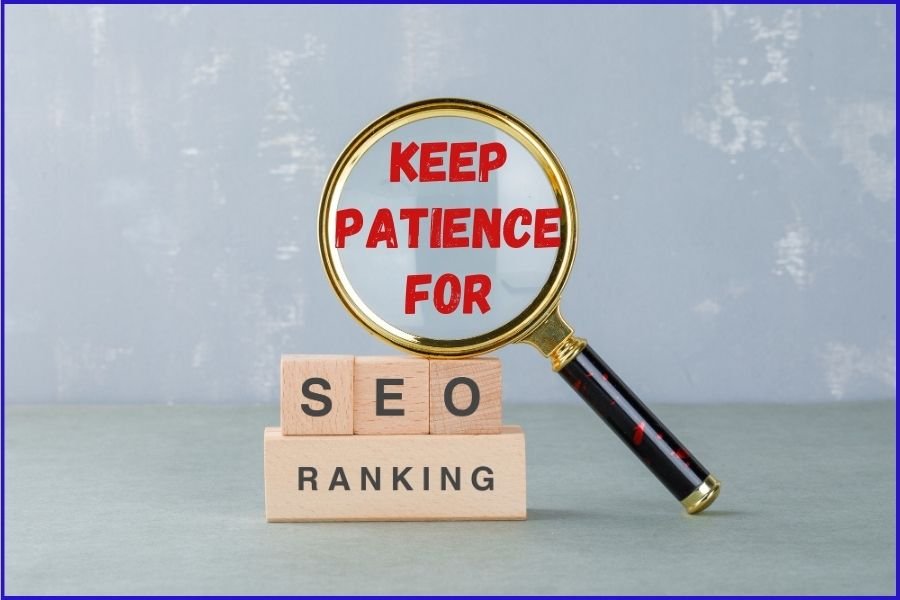Choosing the Right Social Media Platforms for your business
Introduction
In today’s digital age, social media has become an indispensable part of any successful marketing strategy. It offers businesses the opportunity to connect with their target audience on a more personal level, promote their products or services, and build brand awareness. However, with numerous social media platforms available, choosing the right ones for your business can be a daunting task. Each platform has its unique features, demographics, and user behavior. To maximize your social media marketing efforts, it’s crucial to select the platforms that align with your business goals and resonate with your target audience. In this blog post, we’ll explore the process of choosing the right social media platforms for your business, with insights and guidance from RK Media, a leading digital marketing agency.
Understanding Your Business Goals
Before diving into the world of social media, it’s essential to have a clear understanding of your business goals. What are you trying to achieve through social media marketing? Your objectives could include:
- Increasing Brand Awareness: If your primary goal is to create or enhance brand awareness, you’ll want to choose social media platforms that allow for widespread exposure and engagement.
- Driving Website Traffic: Some businesses focus on driving traffic to their websites, where they can convert visitors into customers. In this case, the selected platforms should facilitate easy sharing of website links.
- Generating Leads: If your objective is to capture leads for your products or services, you’ll need platforms that offer lead generation features like forms or contact buttons.
- Boosting Sales: For e-commerce businesses, platforms with integrated shopping features might be more suitable.
- Building Relationships: Building strong customer relationships can be a goal in itself. In this case, you’ll want platforms that emphasize engagement and interaction.
Showcasing Expertise: Some businesses aim to position themselves as industry experts. They may choose platforms that allow them to share educational content and thought leadership.
Understanding Your Target Audience
Your target audience plays a pivotal role in determining the right social media platforms for your business. Different demographics and user behaviours are prevalent on various platforms. To better understand your audience, consider the following factors:
- Demographics: What is the age, gender, location, and income level of your target audience? Different platforms attract different demographics.
- Interests and Behaviors: What are the interests, hobbies, and online behaviors of your ideal customers? Some platforms cater to specific interests more effectively than others.
- Preferred Content: Does your audience prefer visual content, written articles, videos, or a combination? Certain platforms are better suited for specific types of content.
- Engagement Patterns: How does your target audience engage with content on social media? Are they active in discussions and comments, or do they prefer to passively consume content?
To illustrate the importance of understanding your audience, RK Media offers a case study:
Case Study: Beauty Brand
Imagine you own a beauty brand that specializes in skincare products for young adults. Your target audience consists mainly of women aged 18 to 30. They are interested in skincare routines, makeup tutorials, and beauty tips. Based on this audience profile, platforms like Instagram and TikTok may be your best choices. These platforms are popular among young adults and are highly visual, making them ideal for showcasing your skincare products through images and short videos. In contrast, LinkedIn, a platform known for professional networking, might not be as effective for reaching this particular audience.
Researching Social Media Platforms
One crucial aspect of social media research is user behaviour analysis. Researchers explore how individuals engage with content, form connections, and express themselves online. This involves examining patterns of communication, content creation, and the emotional impact of social media on users’ well-being.
Social media research also encompasses algorithmic studies. Understanding how platform algorithms curate and prioritize content is essential to grasp the dissemination of information and potential biases. Researchers investigate the role of algorithms in shaping user experiences, filter bubbles, and echo chambers, shedding light on the implications for information access and polarization.
Once you have a clear understanding of your business goals and target audience, it’s time to research the various social media platforms. Here’s a breakdown of some of the most popular platforms and their key features:
1. Facebook
Audience: Facebook boasts a diverse user base spanning all age groups, making it one of the largest social media platforms worldwide.
Key Features:
- The largest social media platform with billions of users.
- Diverse user demographics, making it suitable for a wide range of businesses.
- Offers a variety of ad formats and targeting options.
- Supports business pages and groups for community building.
- Effective for sharing long-form content and multimedia.
Useful for:
Brand Awareness: You can reach a large audience and build brand recognition.
Engagement: Encourage discussions and interactions within your community.
Lead Generation: Use targeted ads and lead forms to generate potential customer leads.
Best Practices:
Content Variety: Share a mix of visuals, videos, articles, and user-generated content.
Engagement: Respond promptly to comments and messages to build trust.
Paid Advertising: Consider using Facebook Ads to reach specific demographics.
2. Instagram
Audience: Instagram is popular among younger users who are interested in visual content and aesthetics.
Key Features:
- Focused on visual content, primarily images and short videos.
- Ideal for lifestyle, fashion, beauty, and food industries.
- Features Stories and IGTV for engaging with followers.
- Strong engagement and discovery through hashtags.
- Supports e-commerce through shoppable posts.
Useful for:
Brand Awareness: Use eye-catching visuals to promote your brand and products.
Visual Storytelling: Share behind-the-scenes content and user-generated content.
E-commerce: Drive sales by enabling shopping features.
Best Practices:
Visual Consistency: Maintain a consistent style and theme for your content.
Use Hashtags: Use relevant hashtags to increase discoverability.
Engagement: Interact with followers through comments and direct messages.
3. Twitter
Audience: Twitter attracts news enthusiasts, professionals, and influencers.
Key Features:
- Real-time updates and short-form content.
- Ideal for news, trends, and engaging in conversations.
- Effective for sharing timely promotions and updates.
- Supports targeted advertising based on interests and keywords.
Useful for:
Customer Support: Provide quick responses to customer inquiries.
News Sharing: Share industry news, updates, and thought leadership.
Thought Leadership: Establish your brand as an industry authority.
Best Practices:
Frequent Updates: Tweet regularly to stay relevant.
Use of Hashtags: Include trending and relevant hashtags in your tweets.
Engagement: Respond to mentions and engage in conversations.
4. LinkedIn
Audience: LinkedIn primarily attracts professionals, B2B audiences, and job seekers.
Key Features:
- A professional networking platform.
- Effective for B2B marketing, job postings, and thought leadership.
- Provides company pages and showcase pages for brand representation.
- Targeted advertising options for business-related content.
Useful for:
B2B Lead Generation: Generate leads and build relationships with businesses.
Industry Authority: Share valuable content to position your brand as an expert.
Job Recruitment: Post job openings and connect with potential hires.
Best Practices:
Professional Tone: Maintain a professional and informative tone.
Content Sharing: Share industry insights, case studies, and relevant articles.
Networking: Actively connect and engage with others in your industry.
5. Pinterest
Audience: Pinterest predominantly attracts female users interested in DIY, fashion, and lifestyle.
Key Features:
- Focuses on visual discovery and inspiration.
- Ideal for industries like fashion, home decor, DIY, and recipes.
- Users often create boards to collect and organize content.
- Supports shopping features for e-commerce businesses.
Useful for:
E-commerce: Promote products with visually appealing pins.
Creative Businesses: Share DIY ideas, recipes, and lifestyle content.
Inspiration: Offer inspiration in the form of mood boards and ideas.
Best Practices:
Visually Appealing Pins: Create high-quality, visually appealing pins.
Keyword Optimization: Use keywords in pin descriptions to improve discoverability.
Rich Pins: Enable rich pins for products and recipes.
6. YouTube
Audience: YouTube attracts video enthusiasts across diverse demographics.
Key Features:
- The largest video-sharing platform in the world.
- Ideal for businesses that can create high-quality video content.
- Great for educational content, product demonstrations, and tutorials.
- Offers opportunities for monetization and advertising.
Useful for:
Video Marketing: Create video content to showcase products and services.
Educational Content: Share tutorials, demonstrations, and industry insights.
Building a Channel: Build a subscriber base for long-term engagement.
Best Practices:
Quality Videos: Invest in high-quality video production.
SEO Optimization: Optimize video titles and descriptions for search.
Consistency: Maintain a regular upload schedule.
7. TikTok
Audience: TikTok is popular among younger, creative individuals interested in short-form video content.
Key Features:
- Short-form video platform with a young and engaged user base.
- Trend-driven content and creative challenges.
- Effective for viral marketing and brand awareness.
- Offers advertising options to reach a broader audience.
Useful for:
Brand Awareness: Capitalize on trends to increase visibility.
Creative Campaigns: Engage users with entertaining and innovative content.
Short-form Ads: Utilize TikTok ads for promotional purposes.
Best Practices:
Creativity: Be creative and authentic in your content.
Trend Participation: Engage with trending challenges and hashtags.
Consistent Posting: Regularly post to keep your audience engaged.
8. Snapchat
Audience: Snapchat appeals to younger users interested in ephemeral and interactive content.
Key Features:
- Focuses on ephemeral content with a younger user base.
- Ideal for sharing behind-the-scenes content and promotions.
- Offers ad formats like Snap Ads and Sponsored Lenses.
Useful for:
Brand Awareness: Engage younger audiences with interactive content.
Limited-time Promotions: Offer exclusive deals and promotions with disappearing content.
Behind-the-Scenes: Share behind-the-scenes glimpses of your brand.
Best Practices:
Interactive Content: Make use of Snapchat’s interactive features.
Consistent Posting: Maintain a regular posting schedule.
Engagement: Respond to messages and engage with your audience.
Matching Platforms with Business Goals
Now that you’re familiar with the key features of various social media platforms, it’s time to match them with your business goals and target audience. RK Media recommends the following approach:
- Identify Your Top Priority: Determine which of your business goals is the highest priority. For example, if brand awareness is your primary objective, platforms like Facebook, Instagram, and Twitter may be suitable.
- Consider Secondary Goals: While focusing on your top priority, also consider if there are secondary goals you want to address. For instance, if driving website traffic is a secondary goal, Instagram and Pinterest can be effective due to their visual nature and the ability to link to your website.
- Evaluate Audience Alignment: Assess how well the demographics and behaviors of each platform’s user base align with your target audience. Choose platforms that offer the best fit.
- Analyze Competition: Look at where your competitors are active on social media. While you shouldn’t blindly follow their lead, this can provide insights into which platforms are effective in your industry.
- Resource Availability: Consider your resources, including time, budget, and creative assets. Some platforms require more resources than others. Ensure you can consistently maintain a presence on the chosen platforms.
- Experiment and Adapt: Don’t be afraid to experiment with different platforms initially. Monitor your performance and adjust your strategy based on what works best for your business. To illustrate this approach, let’s revisit the beauty brand example: Case Study: Beauty Brand (Revisited)Based on a top-priority goal of increasing brand awareness among young adults interested in skincare, the beauty brand decided to focus on Instagram and TikTok. These platforms align perfectly with the target audience’s demographics and interests. Instagram allows for visually showcasing skincare products, while TikTok’s trend-driven nature can lead to viral content and increased visibility. The brand also considers driving website traffic as a secondary goal. Instagram’s “Swipe Up” feature for Stories and the ability to include website links in the bio make it an excellent choice for this purpose.
Crafting Your Social Media Strategy
Once you’ve chosen the right social media platforms for your business, it’s time to craft a comprehensive social media strategy. Your strategy should outline:
- Content Plan: Define the type of content you’ll create for each platform, including images, videos, blog posts, and infographics.
- Posting Schedule: Determine how often you’ll post on each platform. Consistency is key to maintaining audience engagement.
- Engagement Plan: Outline how you’ll engage with your audience, respond to comments, and participate in conversations.
- Advertising Strategy: If budget allows, include paid advertising as part of your strategy. Define your target audience and ad formats for each platform.
- Measuring Success: Establish key performance indicators (KPIs) to measure the success of your social media efforts. Common KPIs include engagement rate, website traffic, lead generation, and sales conversion.
- Testing and Optimization: Plan to continually test and optimize your strategy based on performance data. What works on one platform may not work on another, so adapt accordingly.Remember that social media marketing is an ongoing process. It requires consistent effort and monitoring to achieve your business goals effectively.
Conclusion
Choosing the right social media platforms for your business is a crucial step in building a successful online presence. By understanding your business goals, knowing your target audience, and researching the features of different platforms, you can make informed decisions that align with your objectives. Remember, the world of social media is dynamic, and what works today may not work tomorrow. Stay informed, adapt to changes, and consistently provide value to your audience to build a strong and lasting presence on social media. With the right strategy and platform selection, your business can harness the full potential of social media to achieve its goals and thrive in the digital age.
RK Media, a leading digital marketing agency, emphasizes the importance of matching platforms with business goals and staying adaptable in the ever-evolving world of social media marketing. With a well-crafted social media strategy, you can leverage the power of these platforms to connect with your audience, promote your products or services, and achieve your business objectives.
Image Reference: freepik & unsplash
Disclaimer: All trademarks, logos, and brand names are the property of their respective owners. All company, product, and service names used in this website are for identification purposes only. Use of these names, trademarks, and brands does not imply endorsement.
























